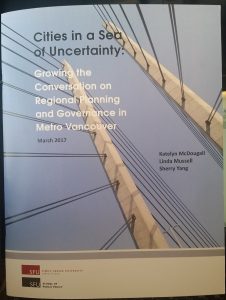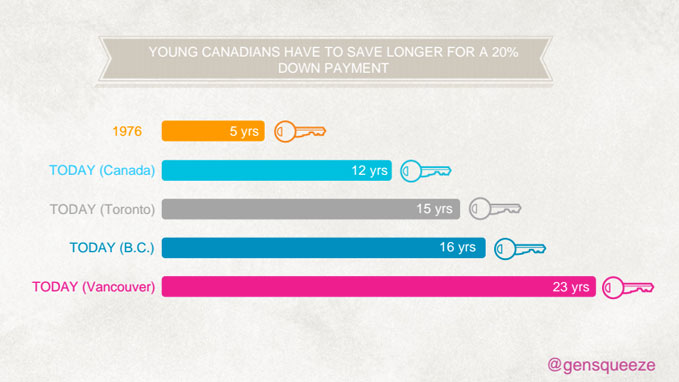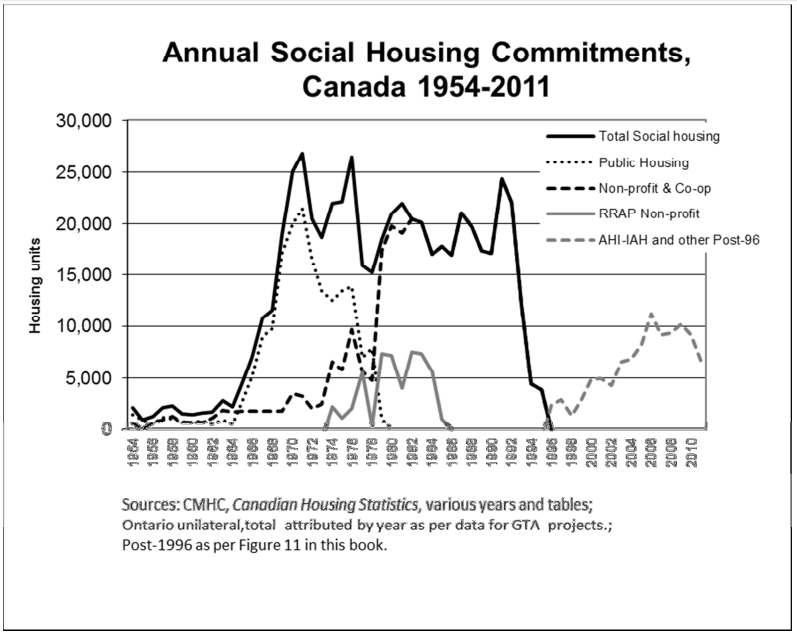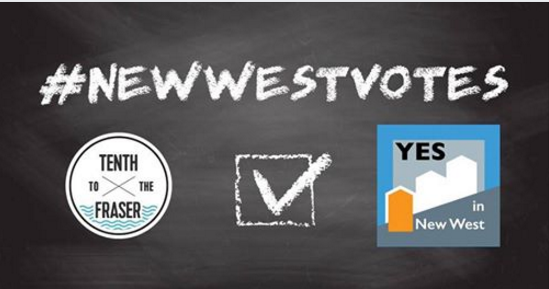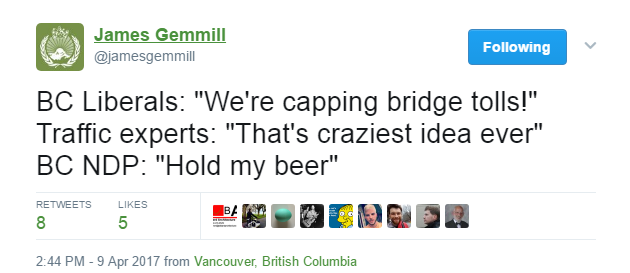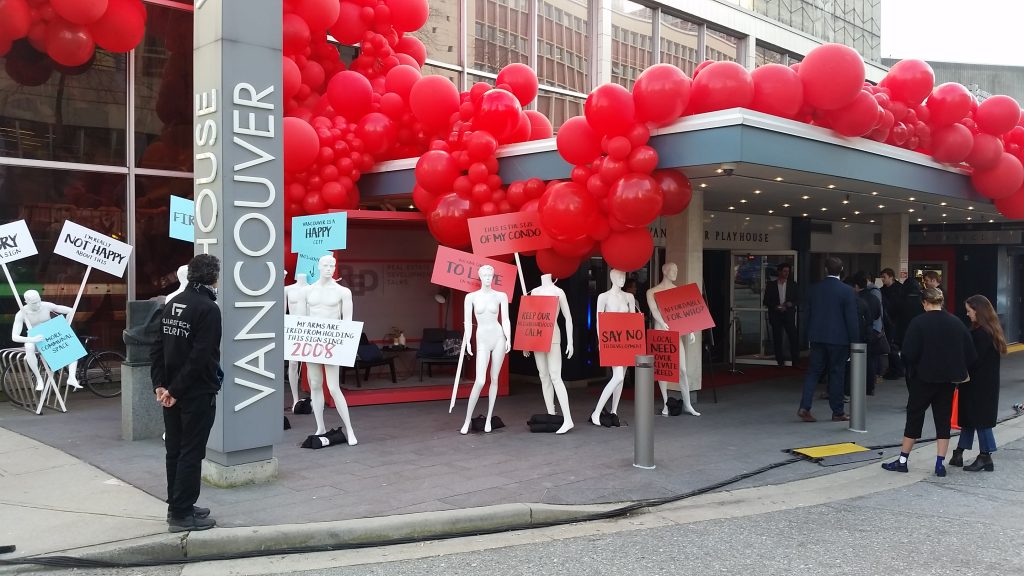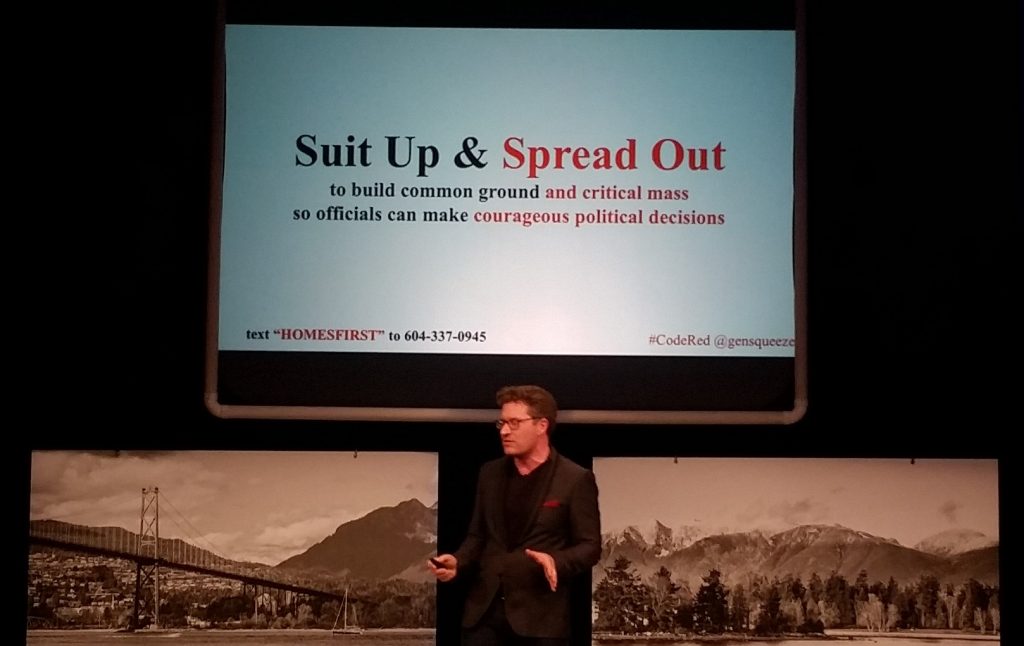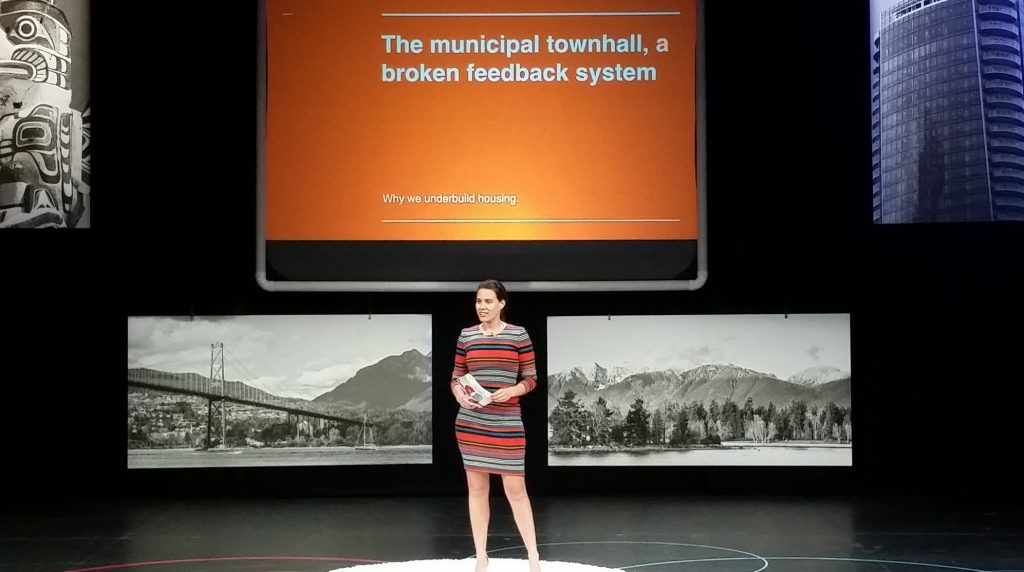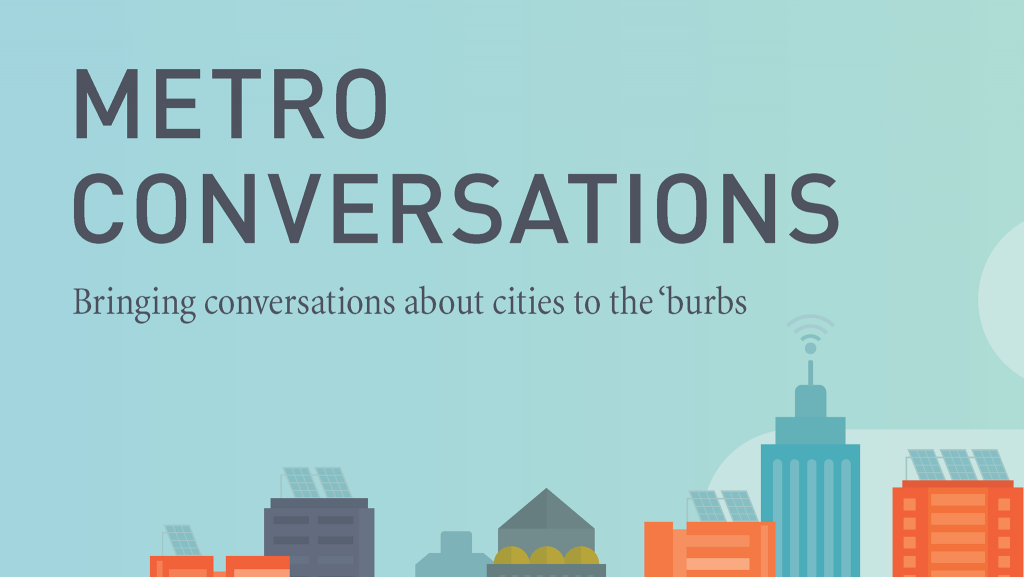Elections are about campaigns, and campaigns are about narratives.
This is what makes the silly little story of Christy Clark and her posse ducking out of the Sun Run after the start-line Photo-Op interesting.
Photo-Ops are as much a part of a modern campaign as fundraising and debates. Showing up for a big public event like the Sun Run seems like a smart idea: Get a number, don some running gear, look like you’re part of the crowd, be relatable. Ducking out of an event after the photo-op is also not a surprising a move, so why was this duck-out a big deal for Christy Clark?
Because it fits the narrative that the opposition NDP have sucessfully placed around Christy Clark: she can’t be trusted, she’s crooked, she’s an opportunist and a cheater.
Showing up for a running race with your race gear, then diving out of the race before the end doesn’t smell genuine – it seems a bit like you’re cheating. You want people to think you put in an effort, you got photographed apparently putting in the effort, but you didn’t actually put in the effort. You lied to those people you were trying to relate to. Its sneaky in a way donning the hardhat at a construction site isn’t. It feels dishonest. It fits the narrative.
However, if there is a more interesting story coming out of the Sun Run Photo-op, it has to do with this photo:
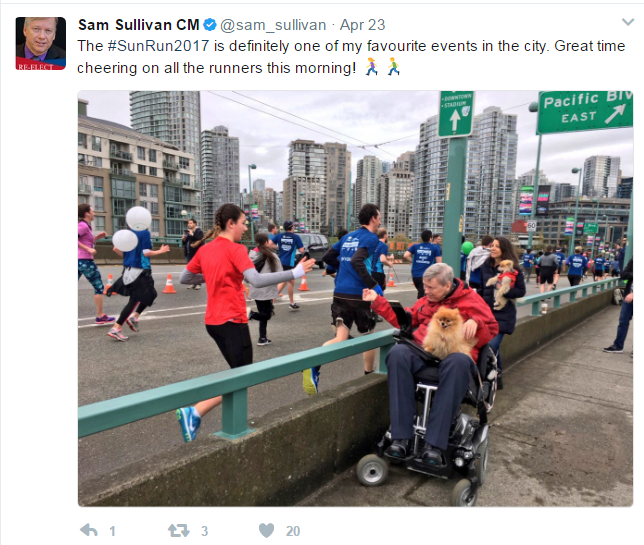
Sam Sullivan has a tradition of showing up near the end of the Sun Run and sending high fives and encouragement to the runners as they go by. It’s a way for him to participate in the biggest annual event within his riding, and he has done it for years. Sure, it is Photo-op, but it connects with people, it feels genuine, and therefore it’s pretty cool. So it is perhaps apropos that Christy Clark didn’t bother to run far enough this year to share a high five or photo with Sam Sullivan. This, unfortunately for Sam, fits the narrative of his invisibility and ineffectiveness as an MLA.
I don’t think there’s another MLA in the province that has been as disappointing as Sam Sullivan. Love or hate his politics, this man was a champion for his City, with a vision for a more livable Vancouver, and an understanding of its role in the region. A politician with his resume (the former mayor of the biggest city in the province!) and his passion would be expected to have a prominent seat at the table in any provincial caucus. Instead, the most common hashtag used in the social media around his work has been #InvisibleSam. In the Christy Clark caucus, as in Cristy Clark’s British Columbia, there are winners and losers. Sam, along with the the smart and competent Moira Stilwell, also from Vancouver, is definitely on the wrong side of that equation. As a result, Sam has sat silently on the back bench during the public transit and transportation boondoggles, has been invisible during the overdose crisis, has been missing during the housing crisis. All of these issues that are so important to his riding, that disproportionately impact the City for which he served as mayor, that threaten his own vision for that City, are the issues he failed to meaningfully adress.
I don’t feel good picking on Sam about this. I’m sure he is as frustrated about this situation as any of us, because I do believe he cares about Vancouver, and I know he understands the public policy that can make his City better. However, this is about the leadership of Liberals, and the inability push good public policy forward within a Caucus system that is based on punishment and reward and appeasing donors. That is the narrative of Sam. At least Stilwell has the guts and the dignity to get out when she can, and call this government what it is:
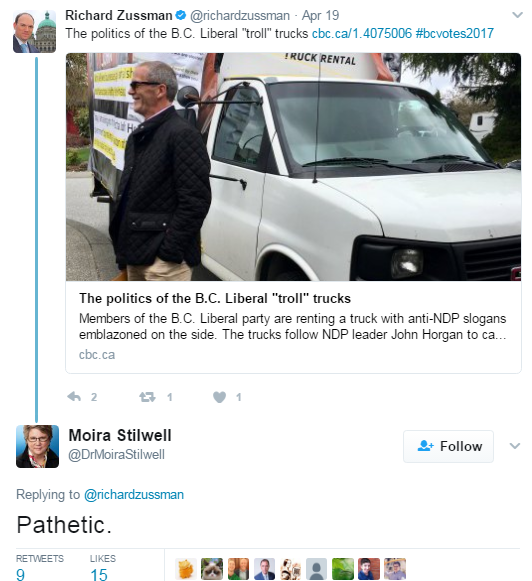
Fortunately, in this election Sam is running against Morgane Oger, a passionate advocate for education in a riding where BC Liberal failure on that file has resulted in a school deficit, even as the neighbourhood booms with an influx of young families and professionals – the type of mixed-use higher-density family-friendly development that Sam Sullivan himself supported when he was Mayor. It seems he cannot (or will not) speak out from his MLA seat, even as his government chooses to undermine the vision he helped create for his City. Morgane is running from behind, in a riding that will be tough to win, but if you are in Vancouver I hope you can find a way to help her get a seat in Victoria. She has a long history of speaking out for what is important to her and her community, and False Creek (and the rest of Vancouver) could use some of that right now.
How can we expect Sam to now speak up for his community, when he can’t even get a photo-op high-five from his own Premier?
